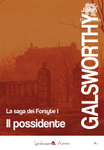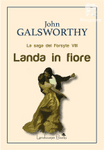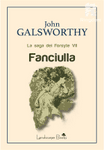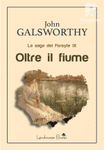48 books
-
1. The Eldest Son
(1912) Persons of The Play: SIR WILLIAM CHESHIRE, a baronet LADY CHESHIRE, his wife BILL, their eldest son HAROLD, their second son RONALD KEITH(in the Lancers), their son-in-law CHRISTINE (his wife), their eldest daughter DOT, their second daughter JOAN, their third daughter MABEL LANFARNE, their guest THE REVEREND JOHN LATTER, engaged to Joan OLD STUDDENHAM, the head-keeper FREDA STUDDENHAM, the lady's-maid YOUNG DUNNING, the under-keeper ROSE TAYLOR, a village girl JACKSON, the butler CHARLES, a footman Setting: Time: The present. The action passes on December 7 and 8 at the Cheshires' country house, in one of the shires. ACT I: SCENE I: The hall; before dinner. SCENE II: The hall; after dinner. ACT II: Lady Cheshire's morning room; after breakfast. ACT III: The smoking-room; tea-time. A night elapses between Acts I. and II.
-
6. The Mob
(1914) PERSONS OF THE PLAY: STEPHEN MORE, Member of Parliament KATHERINE, his wife OLIVE, their little daughter THE DEAN OF STOUR, Katherine's uncle GENERAL SIR JOHN JULIAN, her father CAPTAIN HUBERT JULIAN, her brother HELEN, his wife EDWARD MENDIP, editor of "The Parthenon" ALAN STEEL, More's secretary JAMES HOME, architect CHARLES SHELDER, Solicitor, A deputation of More's MARK WACE, bookseller, constituents WILLIAM BANNING, manufacturer, NURSE WREFORD WREFORD (her son), Hubert's orderly HIS SWEETHEART THE FOOTMAN HENRY A DOORKEEPER SOME BLACK-COATED GENTLEMEN A STUDENT A GIRL ACT I. The dining-room of More's town house, evening. ACT II. The same, morning. ACT III. SCENE I. An alley at the back of a suburban theatre. SCENE II. Katherine's bedroom. ACT IV. The dining-room of More's house, late afternoon. AFTERMATH. The corner of a square, at dawn. Between ACTS I and II some days elapse. Between ACTS II and III three months. Between ACT III SCENE I and ACT III SCENE II no time. Between ACTS III and IV a few hours. Between ACTS IV and AFTERMATH an indefinite period.
-
8. The Pigeon
A Fantasy in Three Acts. (1912) PERSONS OF THE PLAY: CHRISTOPHER WELLWYN, an artist ANN, his daughter GUINEVERE MEGAN, a flower-seller RORY MEGAN, her husband FERRAND, an alien TIMSON, once a cabman EDWARD BERTLEY, a Canon ALFRED CALWAY, a Professor SIR THOMAS HOXTON, a Justice of the Peace Also a police constable, three humble-men, and some curious persons. The action passes in Wellwyn's Studio, and the street outside. ACT I. Christmas Eve. ACT II. New Year's Day. ACT III. The First of April.
-
9. The Forsyte Saga
(1922) A series of three novels and two interludes published between 1906 and 1921 by Nobel Prize-winning English author John Galsworthy. They chronicle the vicissitudes of the leading members of a large commercial upper middle-class English family, similar to Galsworthy's own. Only a few generations removed from their farmer ancestors, the family members are keenly aware of their status as "new money". The main character, Soames Forsyte, sees himself as a "man of property" by virtue of his ability to accumulate material possessions*** this does not succeed in bringing him pleasure. Separate sections of the saga, as well as the lengthy story in its entirety, have been adapted for cinema and television. The first book, The Man of Property (1906), was adapted in 1949 by Hollywood as "That Forsyte Woman", starring Errol Flynn, Greer Garson, Walter Pidgeon and Robert Young. The BBC produced a popular 26-part serial in 1967, that also dramatised a subsequent trilogy concerning the Forsytes, A Modern Comedy. In 2002, Granada Television produced two series for the ITV network called The Forsyte Saga and The Forsyte Saga: To Let, and the two Granada series made their runs in the US as part of Masterpiece Theatre. In 2003, The Forsyte Saga was listed on the BBC's The Big Read poll of the UK's "best-loved novel". This novel is not one book, but six. "The Man of Property" begins in 1886, at the engagement party of young June Forsyte and a Bohemian architect, Philip Bosinney. Almost all the Forsytes (whom Galsworthy describes as a "species" of wealthy Englishman) are present. There are the mid-Victorian "old Forsytes", the "younger Forsytes" who are Late-Victorian, who have inherited incomes and property. The predominant character, Soames Forsyte, is unhappily married to an enigmatic, beautiful woman, Irene, whose friendship with Bosinney, along with Soames' possessiveness, becomes a tragic love affair. It begins a family feud throughout the Saga, ravaging the lives of many, including the next generation. This is much more than a love story, but a brilliant study of Victorian, Edwardian and post-war manners. Soames is the most constant character and one either loves or hates him for his beliefs and actions. This is also true of Irene, whose character is still being debated today.--Submitted by Gwynhwyfar
-
10. La saga dei Forsyte. Secondo volume. In tribunale

Secondo volume della celebre Saga dei Forsyte. Il vecchio Joylon, l’ultimo grande patriarca della famiglia, si riavvicina lentamente a Irene. Soames, deluso e amareggiato, non dimentica invece quella che un tempo è stata (ed è ancora) sua moglie. Dopo l’ennesimo rifiuto della donna, sarà un tribunale a decretare il loro futuro. In un contesto sociale che cambia e che modifica radicalmente i rapporti fra le persone, si profila all’orizzonte una nuova generazione di Forsyte, in apparenza meno conformista e meno attratta dai grandi guadagni e dalle speculazioni commerciali. In tribunale è proposto in edizione integrale annotata.
-
11. Il possidente

Londra 1886. La ricca famiglia dei Forsyte si riunisce per festeggiare il fidanzamento della giovane June con un architetto, Philip Bosinney, di pochi mezzi ma molte ambizioni.Il fidanzamento sarà la scintilla che porterà il clan dei Forsyte, spietato contro l'esterno e apparentemente unito al proprio interno, a fare i conti con le proprie divisioni e con l'età vittoriana al tramonto.
-
12. The Skin Game
A Tragi-Comedy. (1920) "Who touches pitch shall be defiled" This play by Galsworthy deals with the class system and many social issues. Another of his plays in the same theme is Strife (1909). This story is about the interaction between two very different families in rural England just after the end of the First World War. Squire Hillcrist lives in the manor house where his family has lived for generations. He lives there with his daughter, Jill, who is in her late teens, and his wife Amy, as well as servants and retainers. He is of "old money", although his finances are at a bit of low ebb. The other family is the "nouveau riche" Hornblowers, headed by the single-minded and rich industrialist Hornblower who throws old retainers the Jackmans out of their home (much to the Squire's disgust), and who plans to surround the Hillcrist's rural estate with factories. CHARACTERS: HILLCRIST, A Country Gentleman AMY, His Wife JILL, His Daughter DAWKER, His Agent HORNBLOWER, A Man Newly-Rich CHARLES, His Elder Son CHLOE, Wife to Charles ROLF, His Younger Son FELLOWS, Hillcrist's Butler ANNA, Chloe's Maid THE JACKMANS, Man and Wife AN AUCTIONEER A SOLICITOR TWO STRANGERS ACT I: HILLCRIST'S Study ACT II: SCENE I. A month later. An Auction Room. SCENE II. The same evening. CHLOE'S Boudoir. ACT III: SCENE I. The following day. HILLCRIST'S Study. Morning. SCENE II. The Same. Evening.
-
13. The Fugitive
A Play in Four Acts (1913) PERSONS OF THE PLAY: GEORGE DEDMOND, a civilian CLARE, his wife GENERAL SIR CHARLES DEDMOND, K.C.B., his father. LADY DEDMOND, his mother REGINALD HUNTINGDON, Clare's brother EDWARD FULLARTON, her friend DOROTHY FULLARTON, her friend PAYNTER, a manservant BURNEY, a maid TWISDEN, a solicitor HAYWOOD, a tobacconist MALISE, a writer MRS. MILER, his caretaker THE PORTER at his lodgings A BOY messenger ARNAUD, a waiter at "The Gascony" MR. VARLEY, manager of "The Gascony" TWO LADIES WITH LARGE HATS, A LADY AND GENTLEMAN, A LANGUID LORD, HIS COMPANION, A YOUNG MAN, A BLOND GENTLEMAN, A DARK GENTLEMAN. ACT I. George Dedmond's Flat. Evening. ACT II. The rooms of Malise. Morning. ACT III. SCENE I. The rooms of Malice. Late afternoon. SCENE II. The rooms of Malise. Early Afternoon. ACT IV. A small supper room at "The Gascony." Between Acts I and II three nights elapse. Between Acts II and Act III, Scene I, three months. Between Act III, Scene I, and Act III, Scene II, three months. Between Act III, Scene II, and Act IV, six months. "With a hey-ho chivy Hark forrard, hark forrard, tantivy!"
-
17. Landa in fiore

Londra, 1932. La vita tranquilla di Dinny Cherrell è sconvolta dal ritorno in Inghilterra di Wilfrid Desert, il poeta che anni prima era fuggito in Oriente per amore di Fleur Forsyte.Tra loro è amore a prima vista, ma il loro rapporto diventa ben presto tormentato e osteggiato dalle famiglie e dalla “buona società” quando si scopre che Wilfrid si è convertito all’Islam per salvarsi la vita. Non contento, dà alle stampe un poemetto in cui spiega la sua decisione, suscitando scandalo e diventando per tutti un vile da emarginare.Dinny si accorgerà ben presto di quanto sono forti e dure a morire le tradizioni patriottiche e religiose, che Galsworthy riesce a mettere in scena con la consueta maestria nel penultimo capitolo della Saga dei Forsyte.
-
18. I racconti di Casa Forsyte

Nel 1930, dopo aver messo fine alle prime due trilogie della Saga dei Forsyte, John Galsworthy scrisse una serie di racconti incentrati su alcuni dei protagonisti della famiglia Forsyte, ammettendo che era "difficile separarsi da coloro con cui aveva vissuto per così tanto tempo".Da questa singolare nostalgia nascono questi diciannove racconti, ambientati tra il 1821 e il 1918 pervasi di humor inglese e di curiosità per gli appartenenti a una famiglia unica, e da cui emerge un secolo di storia britannica e non solo.
-
19. Fanciulla

Londra, 1930. La “fanciulla” del titolo è Dinny Charwell, cugina acquisita di Fleur Forsyte. L’accusa di omicidio e la minaccia di estradizione che pendono sulla testa di suo fratello Hubert spingono la giovane – di natura riservata sebbene molto caustica – a introdursi negli ambienti della società londinese per salvarlo.Mentre Hubert troverà l’amore della bella Jean, Dinny dovrà affrontare aule di tribunali e ambienti ministeriali, anche se il maggior pericolo arriverà dal trovarsi contesa tra il marinaio Alan e l’esploratore americano Hallorsen.In una nuova traduzione, il primo volume della trilogia finale della Saga dei Forsyte.
-
20. Oltre il fiume

Sono passati quasi due anni dalla drammatica ne del rapporto con Wilfrid Desert, e la vita di Dinny è ancora sconvolta al ricordo dell’amante partito per sempre.A distoglierla dalle sue preoccupazioni è il ritorno della sorella Clare, che ha abbandonato il tetto coniugale per i maltrattamenti subiti dal marito.Il destino delle due sorelle – così diverse eppure così unite – si compirà insieme, portando a conclusione la loro vicenda e l’intera saga dei Forsyte.Terminato appena prima di morire e pubblicato postumo, Oltre il fiume è il testamento letterario di John Galsworthy e un epilogo di straordinario lirismo per la sua saga più famosa.